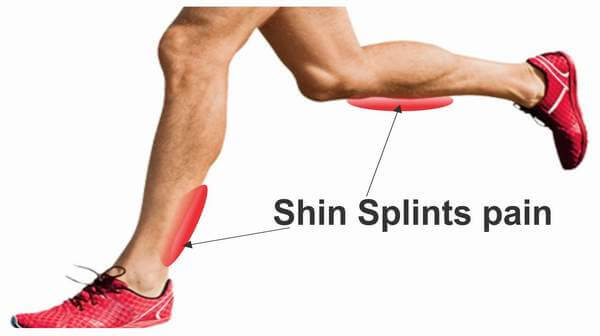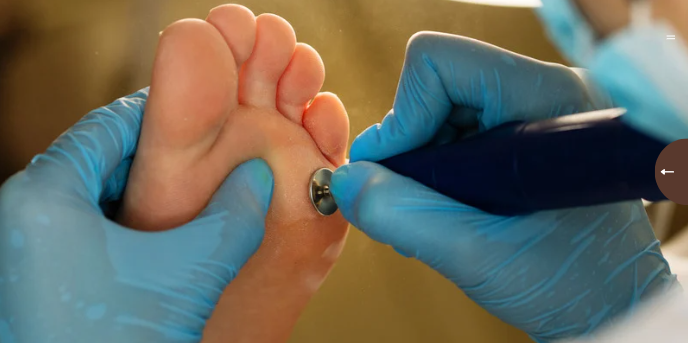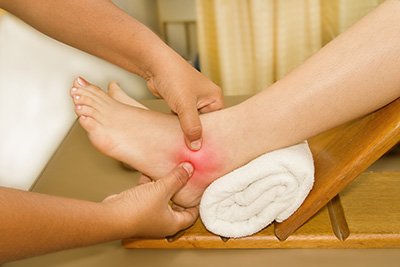Our feet often bear the brunt of it all, leading to discomfort and pain. If you’re experiencing pain in the sole of your foot or any foot-related issues, understanding force and pressure measurements in podiatry can provide valuable insights. Join us on a journey as we delve into the world of podiatric care, shedding light on the intricacies of pain relief, with a special spotlight on the renowned Bucksfoot Clinic.
Understanding Foot Pain
Foot pain can be debilitating, affecting your mobility and overall well-being. The key to effective treatment lies in a thorough understanding of the force and pressure exerted on the feet during various activities.
Did you know? On average, a person takes about 4,000 to 6,000 steps per day. Each step places pressure on the feet, making them susceptible to various conditions.
Force and Pressure Measurements in Podiatry
Podiatrists employ advanced techniques to measure force and pressure on the feet accurately. This involves the use of pressure-mapping systems that analyse the distribution of weight during walking or standing. Such measurements are crucial in diagnosing conditions related to the sole of the foot.
At Bucksfoot Clinic, state-of-the-art pressure-mapping technology is utilised to create a personalised treatment plan. This ensures that the root cause of foot pain is addressed, providing targeted relief.
Foot Step Analysis
Foot step analysis involves studying the way we walk or run to identify irregularities in our gait. By examining the distribution of weight during each step, podiatrists gain valuable insights into potential issues causing pain in the foot.
Force and Pressure Measurements
Force and pressure measurements provide a quantitative understanding of the impact on our feet during various activities. These metrics guide podiatrists in crafting personalised treatment plans, ensuring targeted relief for conditions like pain in the foot.
3-D Motion Analysis
Imagine analysing the motion of your feet in three dimensions, providing a comprehensive view of your movement. 3-D motion analysis allows podiatrists to identify abnormalities that may contribute to foot pain.
As we pivot towards muscle function measurements, let’s uncover how assessing muscle dynamics enhances the diagnostic process.
Muscle Function Measurements
Understanding how muscles function is integral to addressing pain in the foot. Muscle function measurements help pinpoint weaknesses or imbalances that may contribute to foot-related discomfort.
Slow Motion Video
Slow-motion video analysis provides a frame-by-frame examination of foot mechanics. This detailed observation allows podiatrists to identify subtle abnormalities that may not be apparent at regular speed.
Applications in Podiatric Ailments
- Plantar Fasciitis
Transitioning into our first exploration, plantar fasciitis, a common cause of heel pain, is often rooted in faulty foot mechanics. Firstly, foot step analysis assists in identifying irregularities in gait, while concurrently, force and pressure measurements pinpoint areas of excessive strain on the plantar fascia. These combined insights serve as the foundation for podiatrists to craft tailored treatment plans, which may include orthotics to redistribute pressure and alleviate discomfort. - Metatarsalgia
Shifting our focus to metatarsalgia, characterised by pain in the ball of the foot, we turn to the dynamic duo of 3-D motion analysis and slow-motion video. Firstly, 3-D motion analysis provides a comprehensive view of how the metatarsals move during each step. Simultaneously, slow-motion video allows for a meticulous examination of the foot’s interaction with the ground. This tandem approach aids in the identification of abnormal pressure points, guiding the development of interventions, such as custom orthotics or targeted exercises. - Shin Splints
Now, let’s delve into shin splints, causing pain along the shin bone. This discomfort often results from muscle imbalances or overuse. Here, muscle function measurements play a pivotal role in evaluating the strength and coordination of muscles in the lower leg. Based on these measurements, podiatrists can design rehabilitation programs, addressing weaknesses and reducing the risk of recurrent shin splints. - Achilles Tendonitis
Transitioning seamlessly to Achilles tendonitis, characterised by inflammation of the Achilles tendon, we turn to the tandem prowess of 3-D motion analysis and slow-motion video. Firstly, 3-D motion analysis captures the complex movement patterns of the foot and ankle. Simultaneously, slow-motion video offers a detailed examination of the Achilles tendon during various activities. This multifaceted approach aids in devising interventions, including exercises and footwear modifications, to alleviate strain on the Achilles tendon. - Neuromas
Now, let’s unravel the complexities of neuromas, involving the compression of nerves leading to sharp pain and discomfort. To illuminate the path to diagnosis and relief, foot step analysis reveals gait abnormalities that may contribute to nerve compression. Concurrently, force and pressure measurements help identify areas of heightened pressure, guiding podiatrists in recommending changes in footwear and orthotic interventions to relieve nerve compression and associated pain. - Bunions
As we pivot to our final exploration, let’s shine a light on bunions, characterised by a bony bump at the base of the big toe. This condition is often associated with structural foot deformities. To navigate this complex terrain, 3-D motion analysis provides insights into joint dynamics, while muscle function measurements assess the impact of muscle imbalances on bunion formation. This tandem approach informs the development of interventions, such as orthotics and exercises, to mitigate the progression of bunions and alleviate associated pain.
Bucksfoot Clinic
About Bucksfoot Clinic
Nestled in the heart of our community, Bucksfoot Clinic stands as a beacon of excellence in podiatric care. With a team of highly skilled podiatrists and cutting-edge technology, they are dedicated to alleviating foot pain and promoting overall foot health.
- Custom Orthotics: Bucksfoot Clinic specialises in crafting custom orthotics to provide tailored support for your feet, addressing issues at the core.
- Gait Analysis: Understanding how you walk is crucial in identifying irregularities. Bucksfoot Clinic conducts thorough gait analysis to pinpoint areas of concern.
- Foot Pressure Mapping: Utilising advanced pressure-mapping systems, Bucksfoot Clinic ensures precise measurements for accurate diagnostics.
- Sports Podiatry: For athletes, the clinic offers specialised sports podiatry services to enhance performance and prevent injuries.
Bucksfoot Clinic: Your Trusted Partner in Toe Care
In conclusion, understanding force and pressure measurements in podiatry is instrumental in addressing foot pain effectively. With Bucksfoot Clinic at the forefront of innovative podiatric care, relief is within reach. Take that step towards healthier feet today.
Remember, your feet deserve the best care, and a visit to a skilled podiatrist can make all the difference. Embrace a pain-free journey with expert guidance and personalised solutions.
Ready to take the first step towards healthier feet? Contact Bucksfoot Clinic, the finest podiatrists near you in Amersham. Visit our website to learn more.
FAQs
Is foot pain common among all age groups?
Foot pain can affect people of all ages; however, it becomes more prevalent with age.
Can podiatry help with sports injuries?
Yes, sports podiatry focuses on preventing and treating foot and lower limb issues in athletes.
How long does a gait analysis take?
Gait analysis typically takes around 30 minutes, including the assessment and discussion of findings.
How do I know if I need to see a podiatrist?
Persistent foot pain, discomfort, or difficulty in walking are signs to consult a podiatrist.
Are custom orthotics necessary?
Custom orthotics can significantly improve foot comfort and address specific issues.
How often should I get my feet checked?
Regular check-ups are advisable, especially if you experience chronic foot problems or engage in high-impact activities.
Can foot pain be prevented?
Proper footwear, foot hygiene, and regular exercise can contribute to preventing foot pain.








Recent Comments